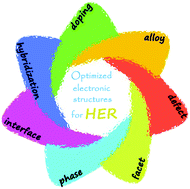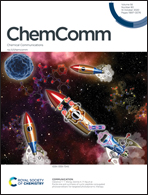Modulation of electronic structures in two-dimensional electrocatalysts for the hydrogen evolution reaction
Abstract
The electrocatalytic hydrogen evolution reaction (HER) has attracted substantial attention owing to its important role in realizing economic and sustainable hydrogen production via water electrolysis. Designing two-dimensional (2D) materials with large surface area, highly exposed surface sites and facile charge transport pathways is highly attractive for promoting the HER activity of the earth-abundant catalysts, and conducting rational modulations in the electronic structures is considered to be promising in further optimizing the intrinsic HER activity and thus realizing promoted HER performance. In this Feature Article, we systematically summarize recent progress in the modulation of the electronic structures of 2D HER electrocatalysts via multiple strategies including elemental doping, formation of alloyed structures, defect engineering, facet engineering, phase regulation, interface engineering and hybridization of the nanocatalysts with 2D substrates, and discuss the role of electronic structures in optimizing the intrinsic HER activity of 2D HER catalysts. We anticipate that this Feature Article will offer helpful guidance for oriented design and optimization of efficient electrocatalysts for scalable and economic hydrogen production.

- This article is part of the themed collection: Chemical Communications HOT Articles


 Please wait while we load your content...
Please wait while we load your content...